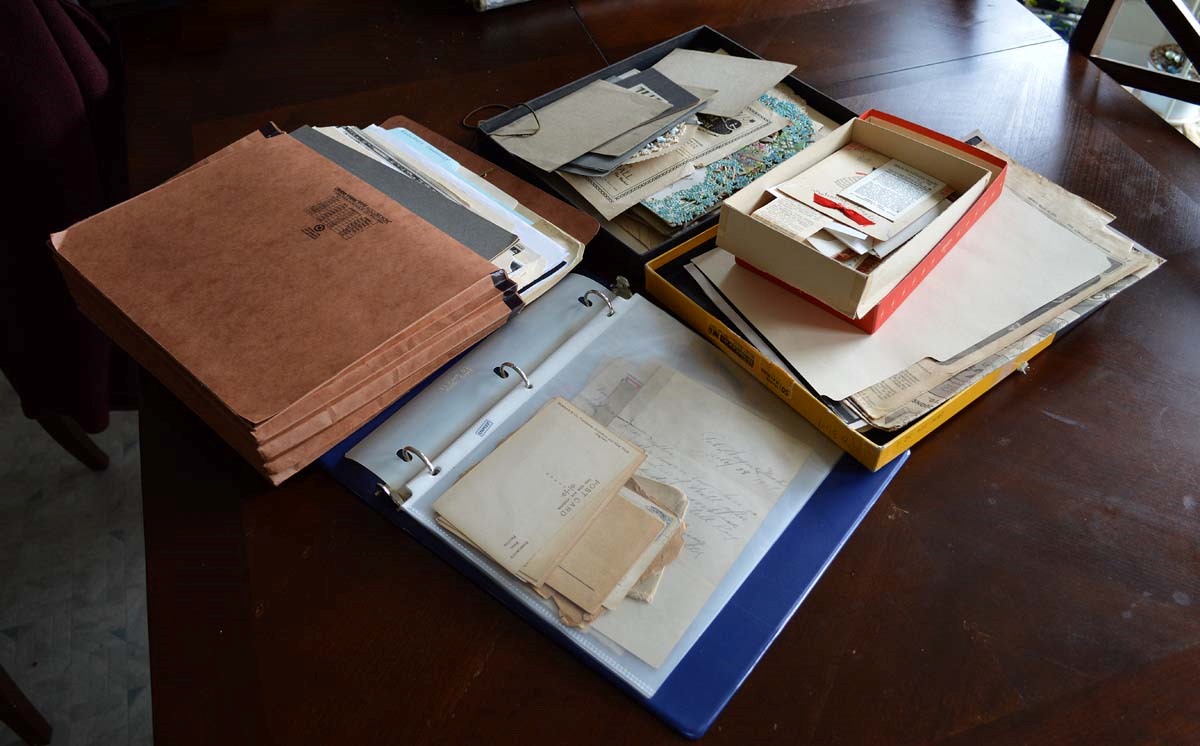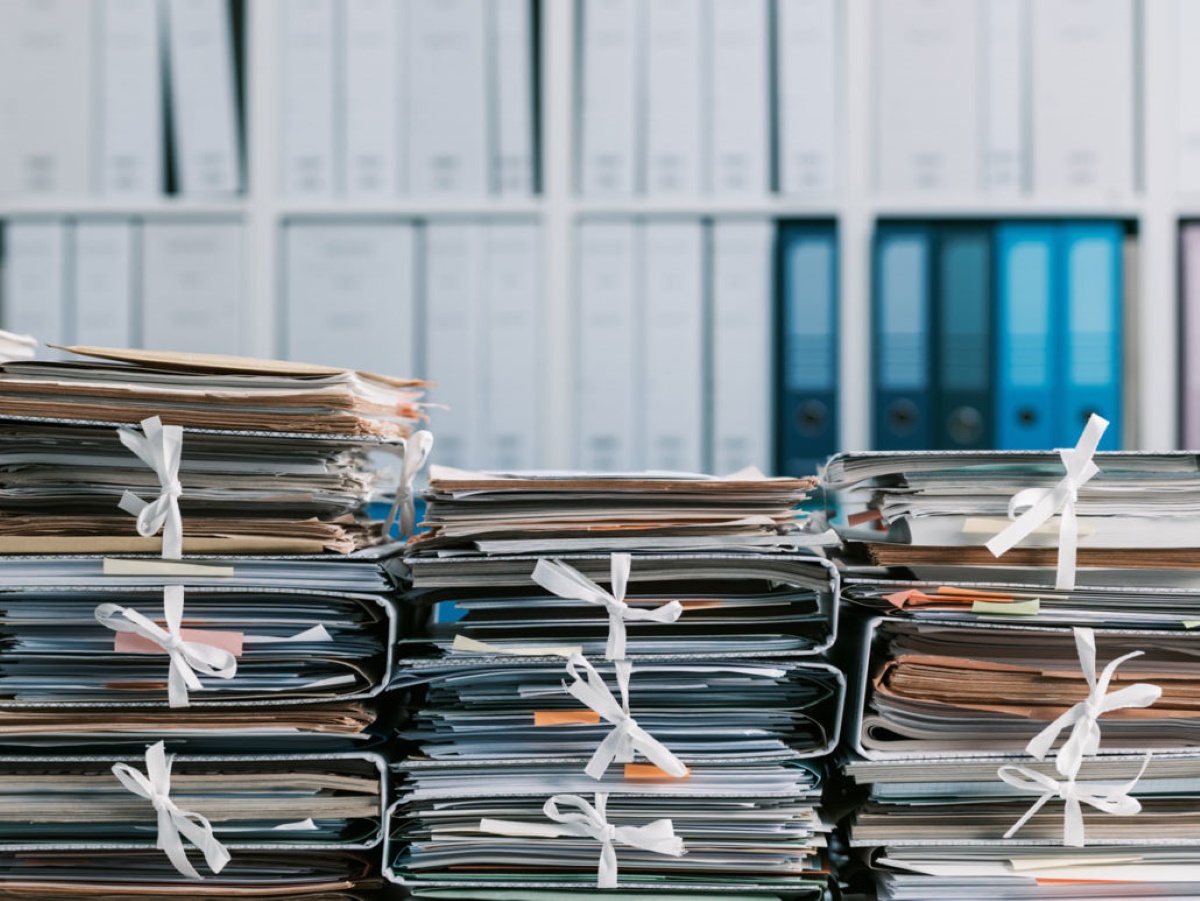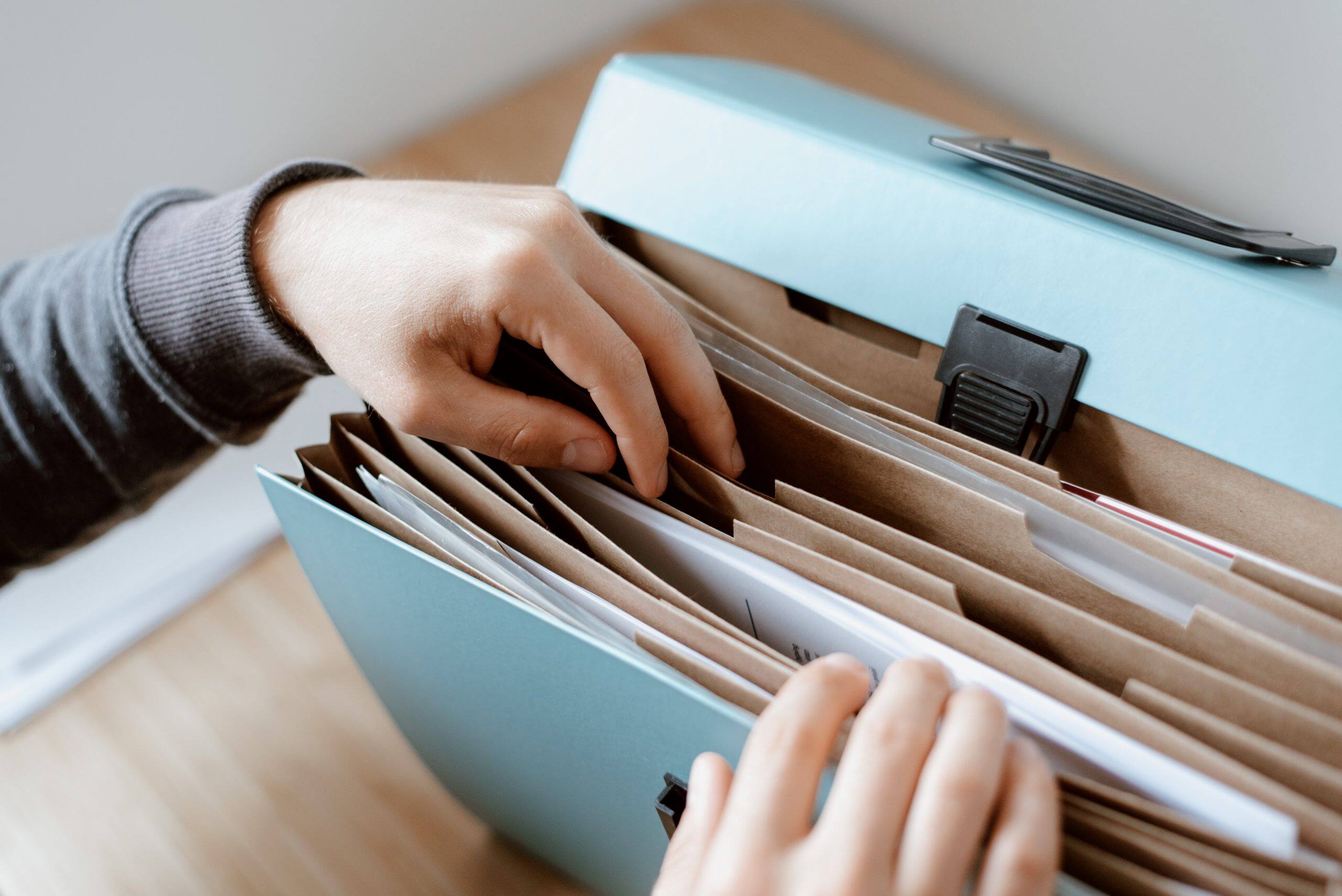

Articles
How To Store Family History Documents
Modified: January 5, 2024
Learn the best way to store and preserve your family history documents with our informative articles. Protect your precious memories for future generations.
(Many of the links in this article redirect to a specific reviewed product. Your purchase of these products through affiliate links helps to generate commission for Storables.com, at no extra cost. Learn more)
Introduction
Preserving family history documents is essential to ensure that future generations can learn about their ancestry and cultural heritage. These valuable artifacts, such as old letters, photographs, and official documents, provide a glimpse into the past and help maintain a connection to our roots. However, improper storage and neglect can lead to damage, deterioration, or even loss of these precious mementos.
In this article, we will provide you with a comprehensive guide on how to store family history documents effectively. From assessing the documents to creating digital copies and preserving them for the long term, we will cover all the necessary steps to safeguard your family’s history for generations to come.
By following these steps, you can ensure that your family history documents remain safe, organized, and easily accessible. Let’s delve into the details of each step to help you get started on this important preservation journey.
Key Takeaways:
- Preserve your family history documents by assessing, gathering supplies, choosing the right storage method, preparing, labeling, and safely storing them. Creating digital copies and maintaining regular inspections are crucial for long-term preservation.
- Safeguard your family history documents by handling with care, maintaining stable conditions, regularly dusting and cleaning storage containers, and addressing signs of damage promptly. Rotate materials, protect against moisture and pests, and cherish the opportunity to safeguard and share your family’s story for years to come.
Read more: How To Store Documents
Step 1: Assess the Documents
The first step in storing family history documents is to assess the materials you have. Take the time to go through your collection and separate the documents into categories such as letters, photographs, certificates, and newspaper clippings. This will help you better understand the type and quantity of materials you are dealing with.
As you assess the documents, make note of any existing damage or signs of deterioration. Look for tears, discoloration, mold, or insect infestations. Understanding the condition of the documents will help you determine the level of care and attention they require.
Additionally, consider the significance and sentimental value of each item. Some documents may hold more importance to you and your family, and you may want to prioritize their preservation.
Once you have assessed and categorized your family history documents, you will have a clearer picture of the scope of the project and can proceed to the next step: gathering the necessary supplies.
Step 2: Gather the Necessary Supplies
Gathering the necessary supplies is crucial to ensure that you have everything you need to properly store your family history documents. Here are some essential supplies to consider:
- Archival-quality folders and envelopes: These acid-free and lignin-free storage materials are designed to protect documents from deterioration.
- Acid-free tissue paper: Use this to separate delicate documents and prevent them from sticking together.
- Archival-quality plastic sleeves: These sleeves provide an extra layer of protection for photographs and other fragile items.
- Archival boxes or binders: These containers are specifically designed to store and protect documents from light, dust, and other damaging elements.
- Labels and markers: Use these to label your storage containers, folders, and envelopes for easy identification.
- Gloves: Opt for gloves made from lint-free and non-reactive materials to handle your documents without damaging them with oils or acidity from your skin.
You may also need additional supplies specific to the type of documents you have. For example, if you have old photographs, you may need photo corners or sleeves specifically designed for photo storage.
Once you have gathered all the necessary supplies, you are ready to move on to the next step: choosing the right storage method for your family history documents.
Step 3: Choose the Right Storage Method
Choosing the right storage method is crucial for ensuring the long-term preservation and protection of your family history documents. Here are some considerations to keep in mind:
- Temperature and humidity: Documents are sensitive to fluctuations in temperature and humidity. It is important to store them in a cool, dry environment with a consistent temperature and humidity level. Avoid basements, attics, or areas prone to extreme temperature changes or moisture.
- Light exposure: Prolonged exposure to light, especially sunlight and UV rays, can fade and damage documents. Store your documents in a dark or low-light environment and consider using UV-filtering film on windows.
- Avoid direct contact: Directly touching documents can lead to damage from oils, acids, and other contaminants on your hands. Always handle documents with clean, dry hands, and consider using gloves made of archival-quality materials.
- Vertical storage: Store documents vertically in archival-quality boxes or binders to minimize stress on the materials and prevent creases, folds, or bending.
- Keep documents flat: For larger documents or photographs, store them flat to avoid curling or warping. Use acid-free folders or encapsulation to provide extra support and protection.
- Avoid overcrowding: Overcrowding storage containers can lead to damage and difficulty accessing documents. Leave a bit of space to ensure ease of retrieval and examination.
Consider the specific needs of each type of document. For example, photographs may require additional protection from light and moisture, while delicate documents such as old letters may benefit from encapsulation or individual protective sleeves.
Remember, proper storage methods help to prolong the life of your family history documents and prevent damage. Now that you have chosen the right storage method, it’s time to move on to preparing the documents for storage.
Step 4: Prepare the Documents for Storage
Preparing your family history documents for storage is a critical step to ensure their long-term preservation. Follow these guidelines to properly prepare your documents:
- Clean the documents: Gently remove any dirt, dust, or debris from the surface of the documents using a soft, lint-free cloth or a gentle brush. Avoid using water or cleaning solutions unless absolutely necessary.
- Mend tears or damages: If you come across torn documents, use archival-quality adhesive tape or repair tissue to mend the tears carefully. Always follow conservation best practices and seek professional help for fragile or valuable items.
- Remove staples, paper clips, and rubber bands: These metal and rubber objects can cause damage and should be removed from the documents. Replace them with acid-free clips or archival-quality plastic sleeves if needed.
- Flatten folded documents: If any documents are folded, unfold them carefully and use weights or archival-quality folders to flatten them. Avoid using adhesive to stick them flat, as this can cause permanent damage.
- Separate delicate items: Layer acid-free tissue paper between delicate items such as photographs or old papers to prevent them from sticking together or transferring acidity.
- Consider encapsulation: Delicate or fragile documents may benefit from encapsulation, where they are placed between two sheets of archival-quality polyester film. This provides an extra layer of protection while allowing visibility.
Remember that each document is unique and may require different methods of preparation. If you are unsure about how to handle a particular document, consult a professional archivist or conservator for guidance.
Once your family history documents are cleaned, repaired, and prepared, you can move on to the next step: labeling and organizing the documents for easy retrieval.
Store family history documents in acid-free folders or boxes to prevent deterioration. Keep them in a cool, dry place away from direct sunlight and potential water damage.
Read more: How To Store Documents At Home
Step 5: Label and Organize the Documents
Labeling and organizing your family history documents is essential for easy retrieval and maintaining order within your collection. Follow these steps to effectively label and organize your documents:
- Create a system: Decide on a labeling and organization system that works best for you. You can use categories such as family lines, time periods, or document types. Consistency is key to ensure easy navigation.
- Label containers: Use labels or markers to clearly identify the storage containers, such as archival boxes or binders, with the corresponding category or subcategory.
- Label folders or envelopes: Label each individual folder or envelope within the storage container with a brief description of its contents, including names, dates, or other relevant information.
- Create an inventory: Maintain a separate inventory or catalog that lists each document and its location within the collection. This will help you keep track of your documents and easily locate specific items.
- Consider digital organization: If you are creating digital copies of your documents, organize them in a logical manner on your computer or cloud storage and ensure they are properly labeled and categorized.
- Document metadata: Include additional information in the document metadata, such as names, dates, locations, and any significant details, to facilitate searching and future reference.
Remember to keep the labeling consistent and update your inventory as new documents are added or when changes occur within your collection. Organizing your family history documents will not only make them easily accessible but also help preserve their integrity over time.
With your documents now labeled and organized, you are ready to move on to the next step: storing the documents safely.
Step 6: Store the Documents Safely
Properly storing your family history documents is crucial for their long-term preservation. Follow these guidelines to ensure the safe storage of your valuable materials:
- Use archival-quality storage containers: Store your documents in acid-free, lignin-free archival-quality boxes or binders. These containers provide a stable and protective environment for your documents.
- Avoid plastic containers: Plastic containers can trap moisture and cause damage to your documents. Opt for archival-quality materials specifically designed for preservation.
- Choose a secure location: Store your documents in a secure area where they are protected from potential hazards such as water leaks, excessive heat, and pests. Consider a closet or a dedicated storage room.
- Elevate storage containers: Place your storage containers on shelves or racks to protect them from potential water damage in case of a flood or leak.
- Monitor temperature and humidity: Use a hygrometer to monitor the temperature and humidity levels in the storage area. Aim for a consistent temperature between 60-70°F (15-21°C) and a relative humidity level between 30-50%.
- Avoid storing in basements or attics: These areas are prone to temperature fluctuations and moisture, which can damage your documents.
- Keep documents off the floor: Avoid storing your documents directly on the floor, as this can expose them to potential water damage. Use shelves or pallets to keep them elevated.
Remember to periodically check your storage area for any signs of damage or pests. Inspecting your documents regularly will help you identify and address any potential risks before they cause significant harm.
Now that your documents are safely stored, it’s time to consider creating digital copies to further protect and share your family history.
Step 7: Create Digital Copies
Creating digital copies of your family history documents is a great way to safeguard them and make them easily accessible for future generations. Follow these steps to create digital copies:
- Choose a scanner: Invest in a high-quality scanner with a resolution of at least 300 dpi (dots per inch) to ensure clear and detailed digital reproductions.
- Prepare the documents: Remove any staples, paper clips, or rubber bands from the documents before scanning. Gently flatten folded or curled documents to ensure smooth scanning.
- Adjust scanner settings: Set the scanner to capture images in color or grayscale, depending on the document type. Adjust the resolution and file format settings according to your preferences and storage capabilities.
- Scan each document: Carefully place each document on the scanner bed and scan one at a time. Make sure the document is aligned properly and capture the entire page.
- Organize digital files: Create a folder structure on your computer or cloud storage to organize the digital copies. Use descriptive file names and include relevant information such as names, dates, and document types.
- Backup digital files: As digital files can be vulnerable to data loss, create backups on external hard drives, cloud storage, or other reliable storage solutions. Maintain multiple copies in different locations for added security.
- Maintain file formats: Save the digital copies in widely supported file formats such as PDF or JPEG to ensure compatibility and accessibility in the future.
Creating digital copies allows you to easily share and preserve your family history documents without risking damage to the original materials. Remember to regularly update your digital backups and keep track of any changes or additions to your collection.
With digital copies in place, we can now focus on preserving and maintaining the original family history documents.
Step 8: Preserve and Maintain the Documents
Preserving and maintaining your original family history documents is crucial to ensure their long-term durability and readability. Follow these guidelines to effectively preserve and maintain your documents:
- Handle with care: Always handle your documents with clean, dry hands to prevent oils, acids, and dirt from damaging the materials. Use gloves made of archival-quality materials for added protection.
- Keep documents in stable conditions: Maintain a stable environment with consistent temperature and humidity levels to prevent deterioration. Avoid exposure to direct sunlight, extreme heat, or cold.
- Regularly dust and clean storage containers: Dust the storage containers and shelves periodically to prevent dirt or debris from accumulating and potentially damaging the documents.
- Inspect for signs of damage: Regularly inspect the documents for any signs of deterioration, mold, insect infestations, or other damage. Address any issues promptly to prevent further deterioration.
- Address mold or insect infestations: If you discover mold or signs of insect infestations, consult with a professional conservator or archivist to properly address the issue. Do not attempt to remove or treat the problem yourself, as it requires specialized knowledge and techniques.
- Store documents flat or upright: Depending on the fragility and size of the documents, store them either flat or upright in archival-quality folders, envelopes, or boxes. Avoid placing heavy objects on top of delicate items.
- Regularly rotate materials: If you have items displayed or exposed to light, rotate them periodically to minimize light damage and ensure even aging.
- Protect against moisture and pests: Take measures to protect your documents from moisture and pests. Use silica gel packets in storage containers to control humidity, and consider using pest prevention methods such as traps or repellents.
Regularly assessing and maintaining your family history documents will help to ensure their long-term preservation. By implementing these preservation practices, you can safeguard your documents for future generations to enjoy and learn from.
With the completion of Step 8, you have successfully gone through all the necessary steps to store and preserve your family history documents. By following these guidelines, you can protect and cherish your invaluable family heritage for years to come.
Read more: How To Store Paper Documents
Conclusion
Preserving and storing your family history documents is a meaningful and important task that allows you to pass down your heritage and stories to future generations. By following the steps outlined in this guide, you can ensure that these valuable artifacts are protected, organized, and readily accessible for years to come.
Remember, the process begins with assessing your collection, gathering the necessary supplies, and choosing the right storage method. Take the time to prepare your documents by cleaning, repairing, and labeling them. Safely store them in archival-quality containers in a suitable environment, free from temperature fluctuations, light exposure, and excess moisture.
Creating digital copies of your documents provides an additional layer of protection and ease of sharing. Organize your digital files alongside your physical collection and maintain regular backups to avoid data loss.
Preservation doesn’t stop there. Maintain a vigilant eye on your documents, regularly inspecting for damage, and addressing any issues promptly. Handle the documents with care and ensure proper storage techniques are followed at all times.
Your family history documents are more than just paper and ink; they hold the stories of your ancestors and the foundations of your identity. By preserving them, you honor the legacy of your family and contribute to the ongoing narrative of your heritage.
So, as you embark on this journey of preserving your family history, remember the importance of these documents and the impact they can have on future generations. Take the time, put in the effort, and cherish the opportunity to safeguard and share your family’s story for years to come.
Frequently Asked Questions about How To Store Family History Documents
Was this page helpful?
At Storables.com, we guarantee accurate and reliable information. Our content, validated by Expert Board Contributors, is crafted following stringent Editorial Policies. We're committed to providing you with well-researched, expert-backed insights for all your informational needs.














0 thoughts on “How To Store Family History Documents”